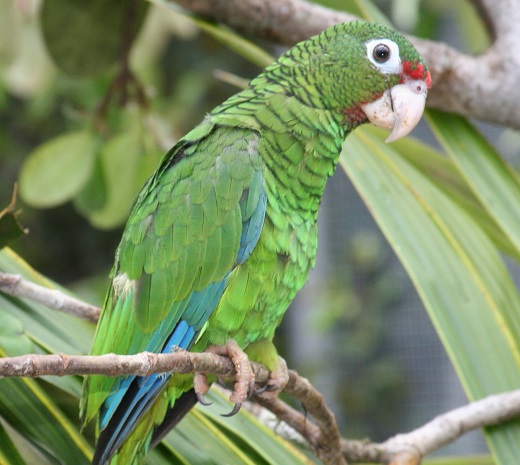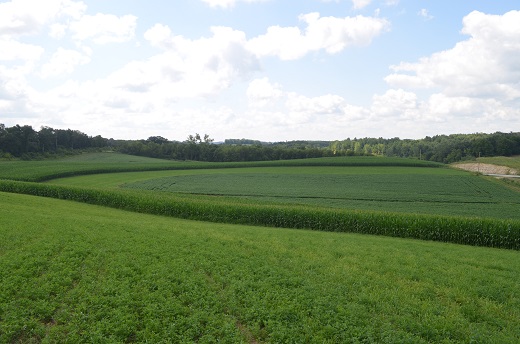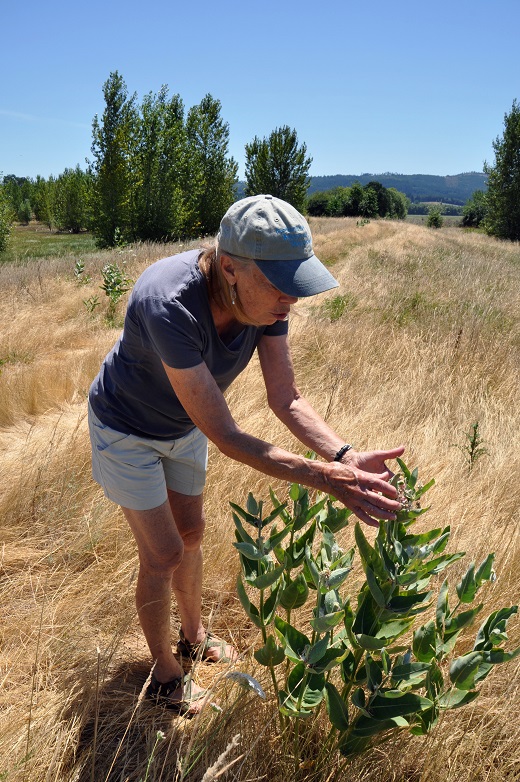Category: Landscape Initiatives
Posted by Julie MacSwain, Minnesota Public Affairs Specialist on July 05, 2016 at 07:54 AM

The golden-winged warbler breeds in the Great Lakes region and the Appalachian Mountains. Photo: DJ McNeil
Minnesota is a stronghold for the golden-winged warbler, a bird suffering a significant population decline. A new project brings together a nonprofit, a federal agency and private landowners to slow or even reverse this decline.
Golden-winged warblers depend on young forests for nesting. But across the country, including in Minnesota, forests have changed, and older forests have come to dominate huge areas. Both game and non-game species that rely on young forests are in decline. Read more >>
Related Links
Tags:
West Virginia,
Maryland,
Pennsylvania,
forests,
Working Lands for Wildlife,
golden-winged warbler,
Minnesota,
Regional Conservation Partnership Program,
Great Lakes region,
Appalachian region
 Landscape Initiatives,
Conservation Programs,
Discover Conservation,
Environment,
Plants & Animals
Landscape Initiatives,
Conservation Programs,
Discover Conservation,
Environment,
Plants & Animals
Posted by Bridgett Estel Costanzo, NRCS Working Lands for Wildlife East Coordinator on July 01, 2016 at 09:03 AM

Like other wildlife that depend on young forests, the golden-winged warbler uses openings created by natural or human-induced disturbances. Photo by Indiana University of Pennsylvania.
As a nature lover and professional biologist, I like to brag that our daughters can identify trees, birds, insects, and even snakes. But one day I received a tiny stab to my prideful heart.
Our daughter, Natalie, had created a poster for her elementary school ecology class that had the message “Don’t kill trees!” When I saw it, I realized that in teaching her about trees, I hadn’t passed on to her an important lesson: that forests go through stages of life just like people do. Read more >>
Tags:
Working Lands for Wildlife,
habitat restoration,
forests
 Landscape Initiatives,
Discover Conservation,
Environment,
Plants & Animals
Landscape Initiatives,
Discover Conservation,
Environment,
Plants & Animals
Posted by Julie Wright, Acting Caribbean Area Public Affairs Specialist on June 30, 2016 at 02:57 PM

Shade-grown coffee plantations provide habitat for the Puerto Rican parrot. U.S. Fish and Wildlife Service photo.
By growing coffee in the shade under a forest canopy instead of directly in the sun, Puerto Rico farmers help a variety of wildlife and improve the quality of their crop.
The coffee shrub, which originated in Ethiopia, grows naturally in the shade. But over the years, many Puerto Rican growers cleared shade trees to boost yields. Now, in an effort to grow higher-quality coffee and conserve natural resources and help wildlife, the island’s growers are bringing back shade trees.
Shade-grown coffee is especially important to wildlife in places where deforestation is common. Shade-grown coffee plantations provide refuge, shelter and nesting sites for the Puerto Rican parrot, sharp-shinned hawk, Puerto Rico nightjar, elfin woods warbler, and many other birds and wildlife species. Researchers have suggested that both birds and orchids have survived periods of deforestation in Puerto Rico because of the presence of shade coffee plantations. Read more >>
Tags:
Caribbean Area,
pollinators
 Landscape Initiatives,
Discover Conservation,
Environment,
Plants & Animals
Landscape Initiatives,
Discover Conservation,
Environment,
Plants & Animals
Posted by Julie MacSwain, Minnesota Public Affairs Specialist on June 29, 2016 at 01:32 PM

Since its start, MAWQCP has certified more than 170 farms totaling more than 91,000 acres. Together, the program keeps over 7.2 million pounds of sediment out of Minnesota rivers, reduces phosphorus application by 4,600 pounds, and saves nearly 10 million pounds of soil on farms, each year.
More than a hundred farms in Minnesota are part of a first-of-its-kind project that gives farmers peace of mind for using water-friendly practices on their fields.
In 2013, the USDA’s Natural Resources Conservation Service helped kick off the Minnesota Agricultural Water Quality Certification Program (MAWQCP) in four small watershed pilot project areas. Funded by the NRCS’s Environmental Quality Incentives Program (EQIP), the project offered producers who demonstrated superior water quality conservation management a 10-year certification by the State of Minnesota and regulatory certainty that they would be in compliance with any new state water quality laws and rules that take effect during the certification period. Read more >>
Tags:
Minnesota,
water quality,
Regional Conservation Partnership Program
 Conservation Programs,
Environment,
Landscape Initiatives,
Water & Climate
Conservation Programs,
Environment,
Landscape Initiatives,
Water & Climate
Posted by Sandra Murphy, Lesser Prairie-Chicken Initiative on June 28, 2016 at 10:11 AM

Ed Koger (standing) and researcher Jonathan Lautenbach prepare to radio-collar a heifer as part of a study of how cattle and prairie chickens use recently burned grasslands.
This story is cross-posted from the Lesser Prairie-Chicken Initiative (LPCI), a partnership led by USDA’s Natural Resources Conservation Service (NRCS) to help ranchers conserve lesser prairie-chicken habitat on working lands.
Under Ed Koger’s care, the Hashknife Ranch is home to a thriving population of lesser prairie-chickens and a robust cattle operation. Koger’s conservation ethic is rooted deep in the Kansas prairie. A fifth-generation Kansan, Koger recalls his maternal grandmother’s words when he was a boy growing up in the Flint Hills. “She’d say, ‘we don’t own the land—it belongs to our Maker, and we need to take care of it and leave it better than we found it.’” Read more >>
Tags:
Kansas,
lesser prairie chicken
 Landscape Initiatives,
Environment,
Farmer & Rancher Stories
Landscape Initiatives,
Environment,
Farmer & Rancher Stories
Posted by Tracy Robillard, Oregon Public Affairs Specialist on June 01, 2016 at 08:31 AM

Laurie Halsey examines a cluster of milkweed plants on her ranch.
If you plant them, they will come.
That’s Warren and Laurie Halsey’s approach to improving monarch butterfly habitat on their 270-acre ranch in Benton County, Oregon.
“If there’s no milkweed, there’s no place for the monarchs to lay their eggs. They depend on it,” Warren said. “We started planting milkweed about 12 years ago when we got some seeds from the Audubon Society. We took it on as an experiment and planted them in different spots on the property. It was a struggle getting the plants going, but we figured out what worked and what didn’t. And then, when the monarchs appear, it’s a blessing. You just get really excited.”
After a decade of trial and error, and with help from multiple volunteers and partners, the Halseys now have 19 active milkweed clusters on their ranch. This year, they reported seeing more monarchs than ever before. Read more >>
Tags:
Oregon,
monarch butterfly,
wetlands,
pollinators
 Plants & Animals,
Conservation Programs,
Environment,
Farmer & Rancher Stories,
Landscape Initiatives
Plants & Animals,
Conservation Programs,
Environment,
Farmer & Rancher Stories,
Landscape Initiatives